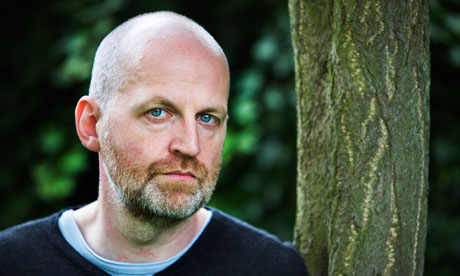Tips from Don Paterson

The Mimi Khalvati workshop notes I posted here recently went down well, so I thought I’d share with you some gems from Don Paterson. Don came down to Sussex for the Pighog Poetry Festival in 2010, and as a tea-making volunteer I was lucky enough to sit in on his masterclass. (Actually that sounds very grand – the way Don described it was ‘you can ask me questions and I’ll just talk’ – in other words, no workshopping or advice on individual work.)
Clearly the man doesn’t beat about the bush. I have to say I came away with so many great tips, and I go back to them OFTEN – I know I still commit some of the ‘sins’ mentioned here and need reminding not to do it! So if you’re sitting comfortably, here goes:
Themes, titles, general tips
- The title is where you can put a clue as to what the poem is about. Once you stated that, don’t keep saying it.
- The beginning has to grab the reader. You might actually start halfway thru the poem, so that the reader can’t tell immediately what it’s about, but wants to read on to find out.
- Don’t make the poem too obscure though – sometimes you have to state what might seem obvious to you.
- If your beginning is predictable then the reader will be one step ahead of you – BORING.
- Don’t start at the beginning with an exposition – first this, then that, then the conclusion – boring!
- Look at how the great poets do it. Frost, Hughes, Heaney. Then look at your own work, and figure out the shortfall – what’s the difference? How can you bridge it? (If anyone has the answer to this one let me know!!)
- Don’t write about hackneyed themes – rainbows etc – there’s nothing new to say – similarly, ‘cool’ things that happen to you – leave them alone! Poetic, beautiful, heart-wrenching things – the poetry is in them, you can’t create another poetic layer, it will be crass.
- Focus on ONE thing – write about ONE thing – it’s a common error to cram too much into a poem.
- Often the one great idea/line you start with ends up being the bit you scratch.
Language
- Cut out the unnecessary modifiers.
- Only use rhyme if it’s necessary, if it’s integral to the piece – don’t add it on. Same other stylistic things – they must be integral, or not be there.
- English is hard to rhyme, so consider half rhymes, or even just focusing on a few related (linguistically) sounds – eg cook, cod, recoup, dog, buddha.
- Pattern the consonants – think about where they are made in the mouth and be aware of grouping them, eg voiced/unvoiced or fricatives or stopped consonants.
- Use short words and long vowels – lengthen and emphasise the vowels, avoid too many schwas, eg words like repetitive or communicative don’t work well
- Make your words sing, the line must sound good
And while we’re on the subject of DP, this video of him in some windswept location reading ‘Rain’ is one of my favourites:

Again, THANK YOU, Robin, for sharing.
[…] whether it’s people, experiences, places, is that the writing has a lot to live up to. (See point 7 of Don Paterson’ tips). Plus there’s not always space for the reader. Whereas writing about the ordinary, in an […]
[…] seriously … as Don Paterson says, “The title is where you can put a clue as to what the poem is about. Once you stated that, […]